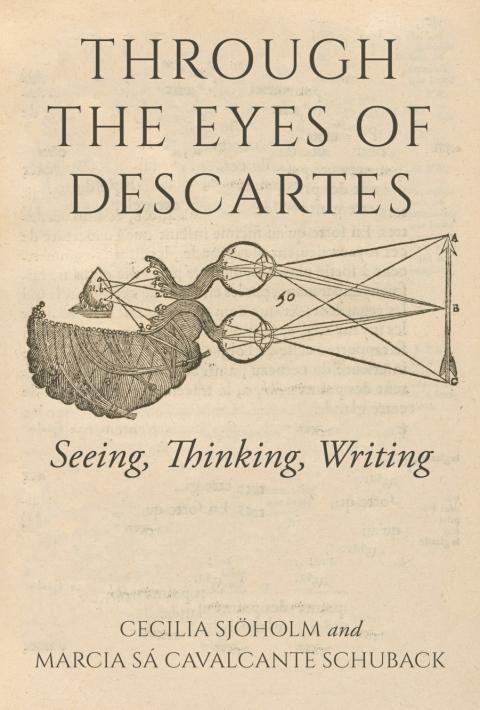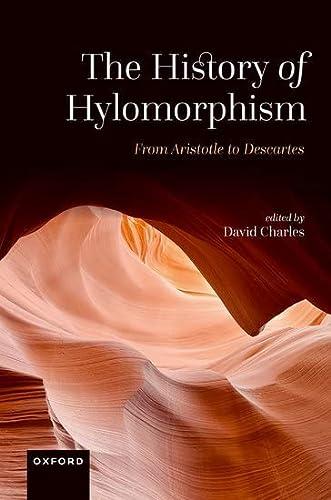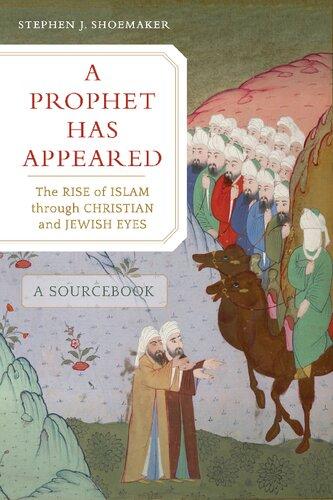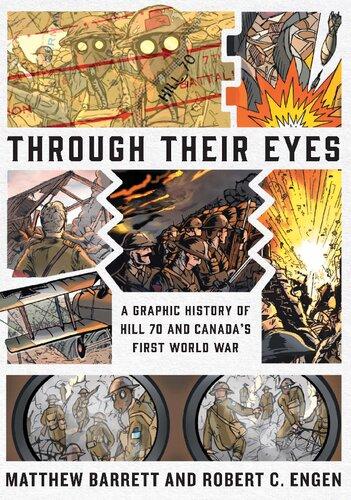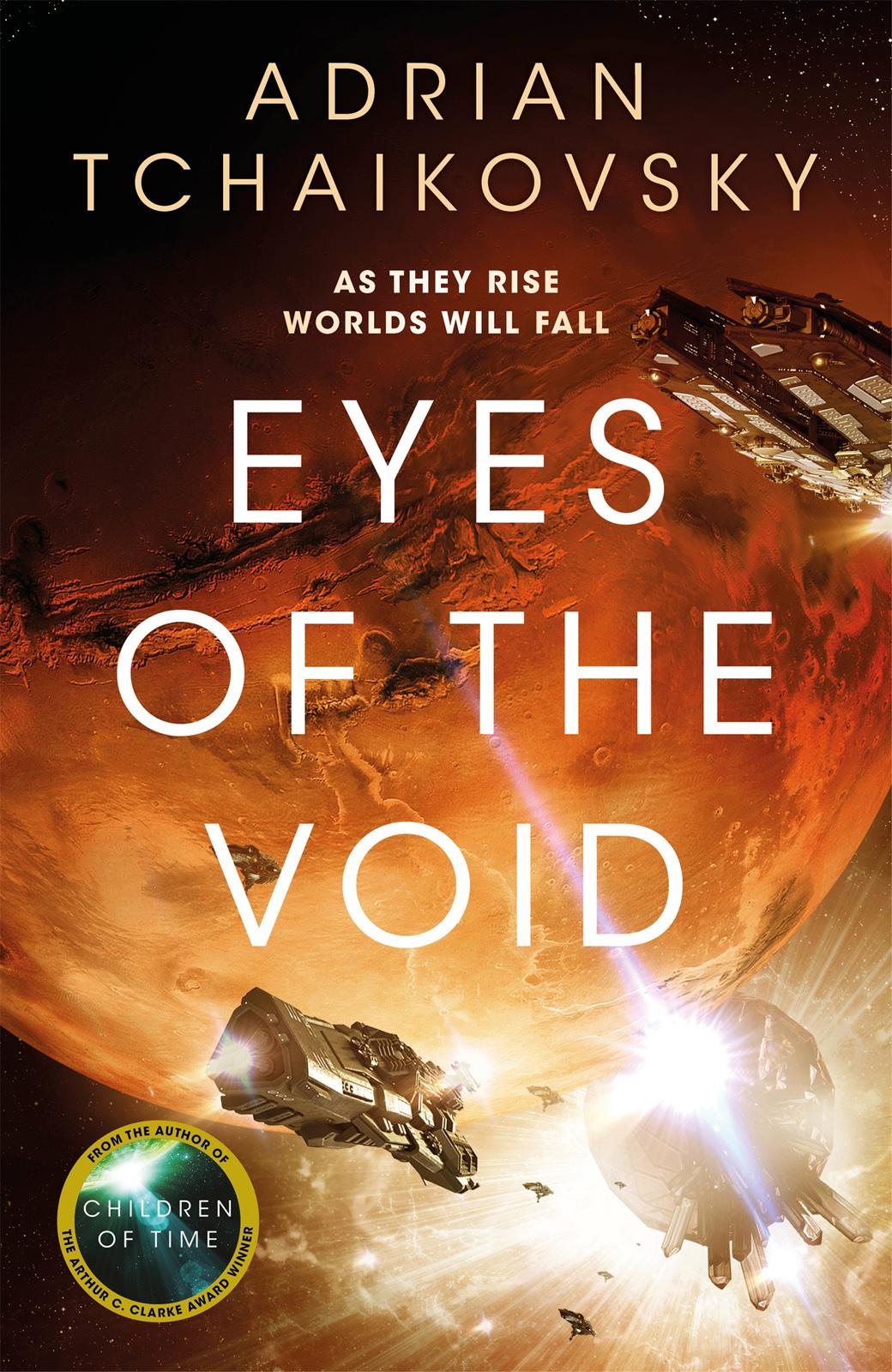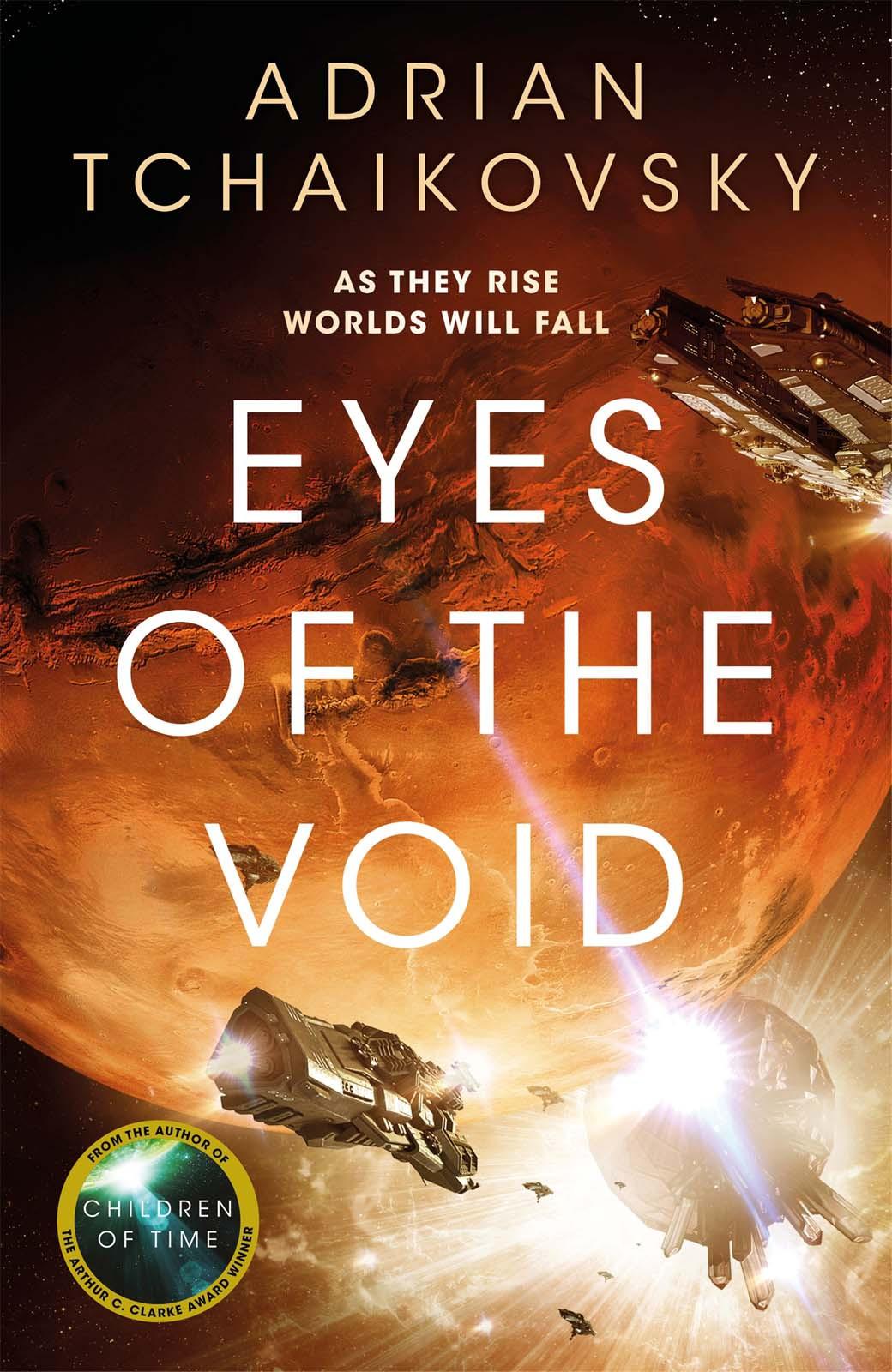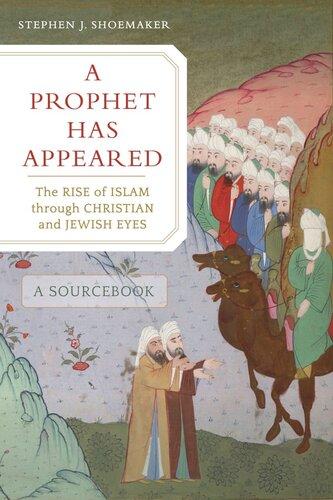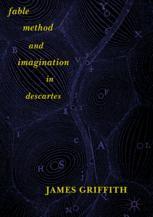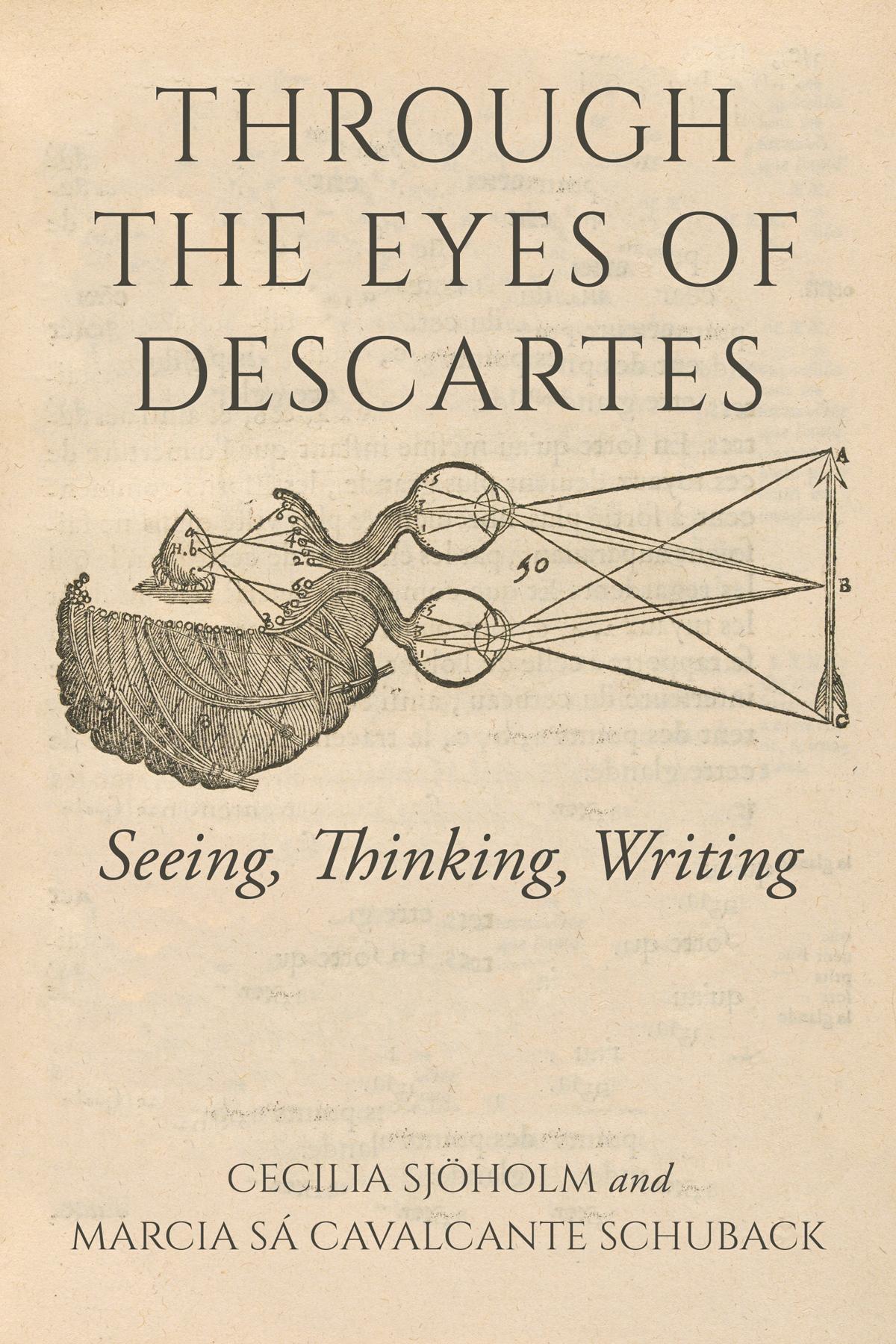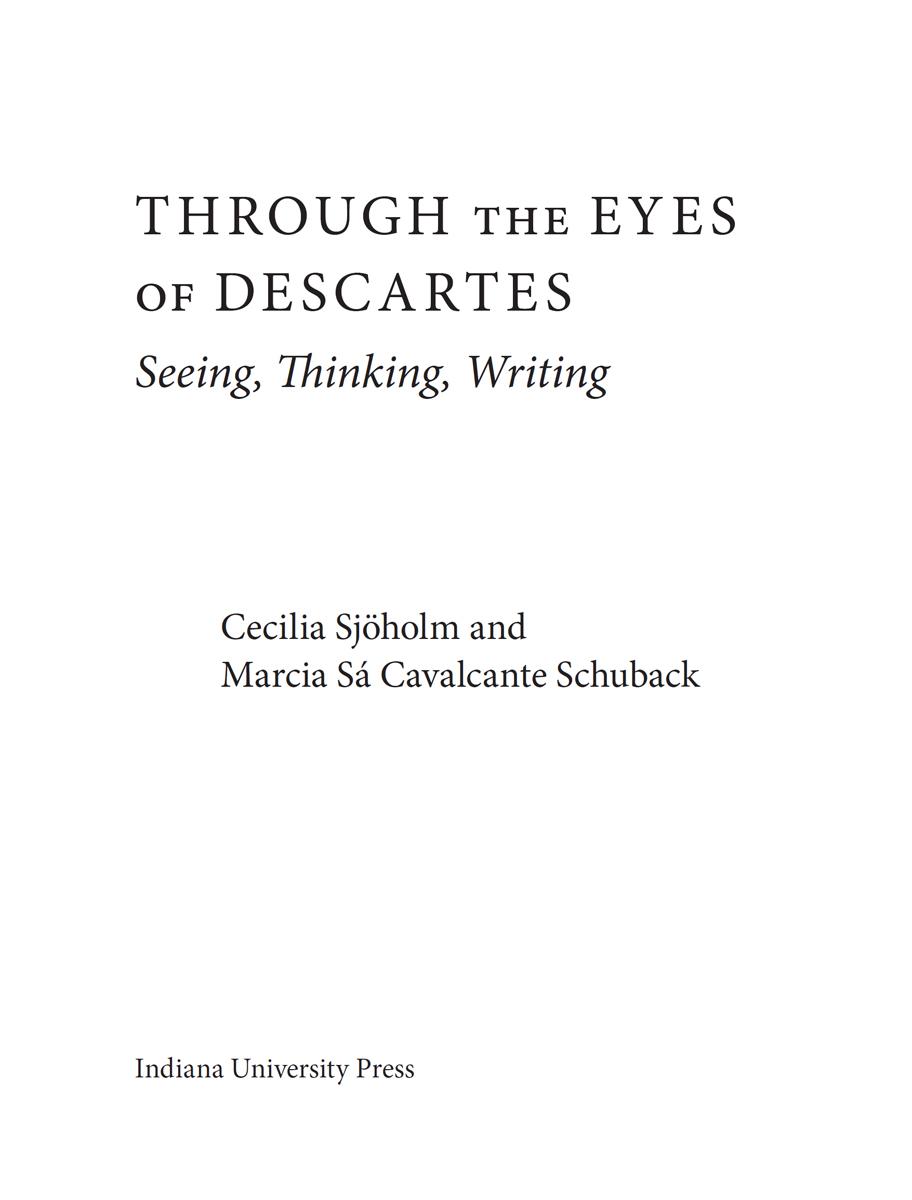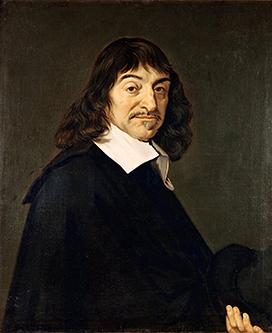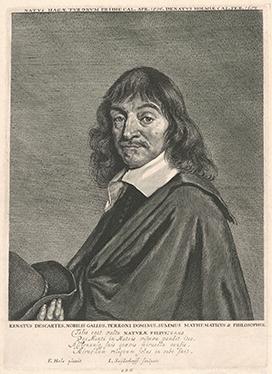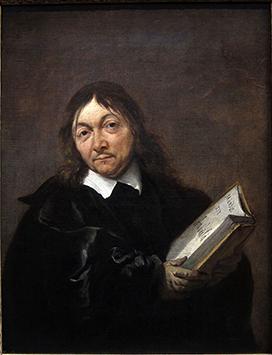Introduction
THE STANDARD PHILOSOPHICAL portrait of Descartes is that of a thinker of universal claims, standing without any worldly background and holding the hand only on himself (fig. Intro.1, portrait by David Beck). Another portrait is by Frans Hals (fig. Intro.2), who depicts Descartes, without any background, holding a hat on the hand and thereby emerging as the philosopher who departs from solid prejudices, inaugurating philosophy as a journey through one’s own thoughts.
Descartes with a hat on the hands became a usual motive, as one can see in Jonas Suyderhoff’s engraving after Frans Hals’s painting (fig. Intro.3).
Another portrait that became typical, painted by Jan Baptist de Weenix in 1647 (fig. Intro.4), depicts Descartes holding a book in which the phrase “mundus est fabula” (“the world is a fable”) is written.
As a fable, the Cartesian world has been seen as one disconnected from the cosmos and from nature, acosmic and unnatural. Descartes has been charged with the separation between body and soul in the name of the freedom of spirit and for the sake of mastering the body. Living in the era of the Europeanization of the world, he has been seen as making humankind the lord and master of all possible natures, imposing rationality as its main instrument.
However, among the many portraits of Descartes—and Descartes is indeed one of the most portrayed philosophers in modern times— there is one rarely seen and discussed namely, the one in which we
can see Descartes as a philosopher of aesthetics. That is the portrait developed in this book. It unravels a Descartes of the arts, sketching an “aesthetic machine”1 of inner images and imagination, where metaphysics and autoanalysis intertwine with aesthetic sensibility. The main thesis of this book is that there is an aesthetics in Descartes both in terms of a theory of the aesthetic as an experience of the senses and in terms of an aesthetic experience operating in philosophical thought. By proceeding from his first treatise on music, which formulates an idea of aesthetic taste over the extraordinary images of his natural philosophy and into his metaphysics and ethics, this book identifies a Cartesian baroque aesthetics in the movements between reason and passion, image and thought, inner and outer, sleep and wakefulness, consciousness and repressed traces and memories that make up Descartes’s work. A baroque aesthetics creates an intense interaction between figures and images and writing, as well as between works—the visceral anatomy inherent to the theory of memory traces in The Passions of the Soul intersects with the sensual experiences of the Meditations, the optical descriptions of Dioptrics intersects with the figurative imagery in Rules for the Direction of the Mind, as does the natural philosophy of the Meteorology, and so on. To the features of a baroque aesthetics belong also a strand of the philosophically uncontained—the act of thinking is an aesthetic act to Descartes, who profoundly seized upon what a philosophical emotion might be.
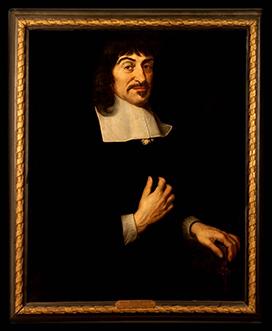
Figure Intro.1. RenéDescartes, 1596–1650, franskfilosof. Copy after David Beck, Nationalmuseum, Stockholm. Photographer: Christophe Laurentin.
Figure Intro.2. Portrait of Descartes, by Frans Hals, Musée du Louvre, Paris.
Intro.3.
Figure
Portrait of Descartes, the philosopher with a hat on the hands, by Jonas Suyderhoff’s engraving after Frans Hals’s painting.
For centuries the name of Descartes has been connected to the advantages and disadvantages of upholding a certain definition of reason as the guiding principle of philosophy. He is known and acknowledged as the father of modern rationalism and idealism. The famous Cartesian figure of the mind, rendered archetypically, frames modern rationality and sensibility with a spatial-temporal relation through which it has become possible to abduct the body from time and the soul from space. In the same spirit, Descartes is also known for his ambition to construe a “general science,” a mathesis universalis that would cover everything that entitles “other sciences
Figure Intro.4. Portrait of Descartes by Jan Baptist de Weenix, Centraal Museum, Holland.
to be called branches of mathematics.”2 Descartes did indeed formulate new principles of mathematics, arithmetic, and perspective. His treatises on optics, physics, and meteors, as well as the modern foundation of metaphysics and cosmology and the intensive studies dedicated to anatomy and medicine, have often been seen in this vein. The legacy of Cartesian philosophy has been defined as the introduction into a technical and modern world that objectifies the human body for the promotion of scientific knowledge and economic exchanges.
To this view belongs also the idea that Descartes construed a subject ruled and regulated by a rational intellect that does not need sensibility to think nor the senses to take part in its adventures. The rational intellect is seen as disembodied and disincarnated, ruling the world from a point of view outside the world, from a worldless perspective or a perspective alienated from the world and from the earth, much like Hannah Arendt’s conception3 of a world alienated from finitude.4
Descartes was indeed explicitly looking for a fabulous Archimedean point, “one firm and immovable point in order to shift the entire earth.”5 Kafka described it as a point that was used against itself in a paradoxical conditioning of its own discovery.6 The notion of “used against itself” can be seen as the price a modern rational intellect has to pay for its presumed freedom and autonomy, considering its own origins in a “will to attention” and “the act of judgment.”7 The Cartesian world is usually portrayed as a world of a rational intellect completely encapsulated in itself, detached from all exteriority, emerging from itself and nourishing itself by itself. Indexed by the Cartesian use of the pronoun je (in Latin, ego), I, when spoken aloud, becomes even more Cartesian in English: an “eye,” or a gaze to the world that no longer needs to be of the world. Understood in this way, the Cartesian modern rational intellect obliges human existence to isolate itself from the universe, to metaphysical solipsism and egoism, through an alienation of the senses and of sensibility, of aisthesis, to use a Greek word. However,
what this book will demonstrate is, from such a perspective, a return of the oppressed, which is inherent in Descartes’s own reflections: a model of anatomy in which childhood memories of love and desire are retained as physiological traces and affect the mind at any time; and a metaphysics of thought in which emotions can at all times be retrieved. In this way, the in-betweens of Descartes’s baroque aesthetics precedes not only the psychoanalytical experience of today but also the many turns that have been undertaken in contemporary phenomenology.
Both the analytic and the continental philosophical traditions have presented efforts in the last few decades to overcome the abyss between the intelligible and the sensible sustained by the Cartesian tradition.8 Studies have shown that Descartes himself presents a solution to dualism in the six Meditations of First Philosophy, Passions of the Soul, and in his correspondence with Princess Elisabeth of Bohemia.9 Others have tried to scrutinize the philosophical and metaphysical errors in Descartes’s philosophy for the sake of reembodying and reincarnating Cartesian reason, laying ground for an indissoluble bond between mind and body, intellect and sensibility.10 It is, for instance, fairly well known today that Descartes overcomes dualism by showing that body and mind are connected in everyday life and through the habits of a person. In addition, contemporary research has shown that Descartes problematized dualism within his own system.11
But the portrait of Descartes and Cartesian thought presented in this book wishes to show something else. Rather than solving the mind-body problem, from within Cartesian thought or beyond, this book delves into territories that have been given little attention: the baroque aesthetics through which emotions and affects, performative claims of thoughts and desires and instincts, are given expression and philosophical body. In recent years, there has been an increasing interest in Descartes’s position regarding the literature, theater, and painting of his own times.12 But no study has hitherto been published that solely focuses on Descartes as a writer who not
only theorizes about aesthetic problems or experiences but also integrates an aesthetics in the layers of thought.
We have chosen to consider features in Descartes’s images and writing that we designate as baroque. Baroque thought can be seen as an “invention of a language that allows to order the elements in a signifying system.”13 It can be seen as the “transcription” or “translation” of things,14 through which a human intellect can think or sense what it has constructed by itself, to itself. Rather than presenting a baroque of the fold, as Deleuze did in his famous book on Leibniz, Descartes’s rationalism opens an avenue to the baroque through a “liberation of forms” and an “infidelity” to the seen and the sensed. As such it fits right into contemporary aesthetic thought, opening avenues for a critical view on ideas of mimetic reproduction. This operates not only in Cartesian theories of the image but also in the experience of how thought moves and reflects itself. This book suggests that a Cartesian baroque aesthetics is not to be understood as a simple response to sensible afflictions. It is also not what overcomes the mind-body dualism. It is rather what lies between the dualisms that Descartes formulates throughout his writings. Therefore, the natural philosophy and the metaphysics are regarded as two wings of the same bird. Descartes is not only challenging his own dualism between mind and body but also passive and active, physical and metaphysical, inside and outside, child and adult, and so on.
The numerous states of in-between are an intrinsic feature of the Cartesian baroque. Cartesian thought manifests itself between imagery and writing, between different states of consciousness, between body and mind, even between the unborn fetus and the child. His writings construe an aesthetic machine of the physical, sensual, affective, and thinking body. This thinking body is a tool for empirical observation in studies such as Optics and Meteorology. But it is also a tool for aesthetic experiences of beauty and ugliness, pleasure, wonder, and shock in which the body is turned inside and out. We can detect a visceral aesthetics that surpasses any intellectual concept of judgment. Inside becomes outside, dream and
reality shift places, love and hate trigger each other, and their origins are seen to be as fantasmatic as they are real. The visceral aesthetics also affects the metaphysics of Descartes. Cartesian thought has been construed as a thinking in images. However, as a form of reflection, the Cartesian experience of thinking being thought, the very movement of being thinking, produces what can be called a “philosophical emotion.” Reading Descartes with critical attention to the movements of his thoughts means experiencing the emotion of a thought being thought—a philosophical emotion. Not only do emotions give rise to thoughts but also the movement of thinking arouses a particular emotion that has rarely been acknowledged. Through such movements, we approach a physical body in which affects and emotions have been inscribed in different layers—the aesthetic machine of a visceral aesthetics, of childhood memories, desires, and drives. The “aesthetic machine” intrudes also in the metaphysical subject. In this way, a baroque aesthetics is formed through the reflection of metaphysical thought sensing itself, as well as through the way in which the passions, or thought as “confused,” to use Descartes’ own expression, is seen to be afflicted by desires, instinct, and repressed memories that take body in the natural philosophy. In Cartesian baroque aesthetics, aesthetics is a domain of philosophical emotions, dreams, fantasies, and instincts. In this way, the metaphysics, the natural philosophy and the ethics of Descartes are deeply intertwined.
In chapter 1, Cecilia Sjöholm argues that the Cartesian baroque aesthetic passes through the visceral; an intertwinement of bodily fluids and traces of perception. States of consciousness (the “soul”), such as taking pleasure in beauty, are affected directly by traces of perception, some of which return to memories of infancy. In this way, beauty is not just a formal quality in objects; it can also be a subjective experience that appears contingent and surprising. Such an experience is attached to inscriptions of the mind that are not readily attainable to consciousness and are often directed toward a person. Descartes inscribes a breaking point between a scopic drive of fascination and a desire for the beautiful. An aesthetic experience derives as much from physical desire or drives of abhorrence (or an
ambivalent mixture) as from a spark of spirit touching the senses. The experience of aesthetic phenomena—the beautiful and the ugly —originates in a corporeal inside that has been depicted in anatomical writings and imagery. In this way, Descartes’s baroque aesthetics is situated at the roots of a tradition that includes later proponents such as Baudelaire, the surrealists, and psychoanalytic theory.
In chapter 2, Marcia Sá Cavalcante Schuback departs from some key passages from Passions of the Soul to show that the Cartesian cogito can hardly be understood without paying attention to the emotion of the soul, the philosophical emotion. She argues that the reflexivity that has been the key concept for centuries in the discussion of the cogito unveils rather a description of this emotion, the way it moves and is moved by the act and experience of thinking. Discussing some dominant views on immediate reflexivity and being in Descartes’s philosophy, she pays attention to the gerundive mode in which the cogito is enounced and proposes some lines to reread in the central passages of the Meditations on First Philosophy.
In chapter 3, Marcia Sá Cavalcante Schuback develops the preceding discussions on Descartes’s attention to the movement of thinking while thinking. The main claim is that Descartes’s cogito is a performative thinking gesture. This attention involves a particular way of seeing, which Descartes conceives of as seeing the seeing. The author shows what kind of vision it is that sees the seeing and how it reveals the baroque aesthetics of Descartes’s doctrine of vision. Descartes’s theory of the eye and the spirit differs from Maurice Merleau-Ponty’s, not by being too physical, as MerleauPonty argues, but on the contrary, by being deeply aesthetic but in a baroque mode. In this chapter, the author also presents a brief unwritten treatise on painting that lies encrypted in Descartes’s thoughts.
In chapter 4, Cecilia Sjöholm reads The Meteorology (Les Météores) from 1637, one of the least commented works of Descartes. In grappling with atmospheric phenomena such as weather, light, and minerals, it evokes experimental perspectives on
weather and climate. Human subjects cannot master the elements or predict the weather, Descartes tells us. It hits us, and we are subject to its vicissitudes. While offering a key to the composites of nature, Descartes’s essay also pushes up against the limits of reason. In times of climate change and unpredictable variations in weather conditions, not least in the climate of the North, Descartes’s treatise, written during the Little Ice Age, has gained newfound relevance. He presents us with the kind of transformations that a northern climate in particular materializes: weather consisting of small particles changing shape and movement, intertwining, interfering, and reorganizing. The discourses on snow, rain, and hail analyze drops in temperature dramatic enough to cause distinct shifts in size, movement, and organization. Through affects, flows, and rhythm, Descartes relies on lived experience and approaches the atmosphere as an aesthetic kind of organization, like music or painting. Rhythmic figurations in image and narrative intersect with sensual experience. Descartes posits a “full” universe of an infinite variety of aquatic shapes that move and transform. This semiontological version of a natural philosophy does not construe rhythmic figurations as illustrations of what it says. Rather, it relies on a rhythmic conception inherent in the description of the experience of weather and other atmospheric phenomena that belong to it.
In chapter 5, Marcia Sá Cavalcante Schuback argues that Descartes’s cogito is a thinking view that is very close to what André Gide called “mise en abime” and that Flemish painters from Descartes’s time used in sophisticated ways in their painting practices. In this chapter, the author proposes that Descartes’s cogito perspective, which is the cogito of the thinking while thinking, cannot be central but must instead be considered anamorphic. Indeed, anamorphic in the sense of seeing very closely, as when hands drawing see lines being drawn while drawing. In reading passages from Descartes’s work that connect the thinking movement to writing, the author also claims that Descartes’s philosophical way of thinking is a thinking through writing hands. She presents the thesis that Descartes’s philosophical thought should be understood in
connection to writing, showing how writing is a form of thought and how philosophical thought performs in and through writing.
In chapter 6, Cecilia Sjöholm discusses how Descartes’s anatomical writings and anatomical images engage questions on images and drives explored in contemporary psychoanalysis. The key word here is gaze. The speculation on the inside of the human body inscribes a scopic drive articulated through the dissection of eyes and heart, laying open the nervous system and the tubes of transport that run between brains and limbs. A gaze of fascination transcends the sheer anatomical aims of visualization. Descartes’s inquiries into “inner images” can be explored through the psychoanalytical theory of the gaze. The Cartesian studies of various states of consciousness—such as the sleeping dream, the state between dreaming and wakefulness—takes us well beyond an analysis of consciousness. The multifaceted investigations of forms of consciousness can also be attached to corporeal instigations of affects and desires—the points at which mind and body are not simply separated, or simply joined, but overlaid with conflicts. In his writings Treatise on Man, The Formation of the Foetus, and Passions of the Soul, Descartes shows, similar to Sigmund Freud, that the subject that thinks and feels is rooted in biological life. This, in turn, suggests the existence of a theory of the drive presaging psychoanalysis.
In chapter 7, Cecilia Sjöholm shows how a Cartesian notion of the unconscious emerges with Passions of the Soul and other writings that differ from how the common psychoanalytic readings of Descartes have mainly focused on the split cogito identified by Jacques Lacan. Exploring the fetal state and the life of the infant, Descartes develops a notion of psychic life that touches on theories of repression, affects, and object relations. In this way, Descartes can be seen as a precursor to psychoanalysis. In Cartesian scholarship, his writings on the infant are usually quoted to demonstrate that the challenge to dualism is to be found in his own writings. But the same writings can also be seen to foreshadow the radical theories of the drive formulated by Freud and Melanie Klein. Descartes conceives of the relation between thought and emotions
in a conception of the “thinking fetus.” He finds that the infant is not simply attached to the maternal body through its needs. The infant is a subject of affects and emotions that develops in and with the maternal body. Sjöholm argues that the Cartesian notion of subjectivity connects to early psychoanalytic theories of repression, fantasy, and incorporation.
In chapter 8, Marcia Sá Cavalcante Schuback reads Descartes’s thoughts of love and proposes a theory of Cartesian love. She argues that in the Cartesian conception of love, the dualism of body and soul can be rephrased in terms of the love between body and soul. Descartes’s thoughts of love appear in his letters, and some letters can also be read as love letters, even if disguised due to respect, as he himself confesses. The author proposes a discussion about letters, love letters as a “means” of love, and presents views on why love longs for writing love letters. Here, it emerges that the experience of love, Cartesian love, is a love of the between, between body and soul, image and thought, vigil and sleep.
The Violence ofthe Beautifuland the Ugly
Cecilia Sjöholm
The Beautiful, the Sound, and the Music
One of the most basic doctrines in philosophical aesthetics is that modern aesthetics is born with the discovery of taste. Taste makes beauty into a pleasurable, subjective experience, rather than the property of an object. From Immanuel Kant’s Critique of Judgement to contemporary neuroaesthetics, aesthetic experience is considered in terms of pleasure, enjoyment, and gratification in this tradition. It is also considered in terms that make it universal and ahistorical.1 To Kant, disinterestedness guides the basic definition of aesthetic judgment.2 Pleasure and beauty, in turn, are qualities that explain how and why humans “fit” into the world.3 Contemporary neuroaesthetics, also, for which the experience of beauty can be associated with certain features of the brain, assumes that beauty arouses a feeling of pleasure that is independent of its source. It may connect to cognitive functions and to the intellect.4 Still, although it can be attached to capacities beyond aesthetic experience—such as a cognitive value, for instance5—aesthetic
experience is best explained as a kind of harmonization of a state of consciousness: free and playful.
A Cartesian aesthetics, however, is at odds with such an idea of harmonization. Pleasure and beauty are at the forefront of aesthetic inquiries—together with the introduction of taste. However, in exploring experiences of poetry, images, and music, Descartes also shows how bodies are gripped by affects and desires that lie beyond rational control. Reading Descartes, we move in a pre-Kantian universe where relations between bodies create an order of nature that affects the mind (as in, e.g., G. W. Leibniz, Thomas Hobbes, and Baruch Spinoza).6 But Descartes’s writings are not only exploring affects; they are also exploring aesthetic experiences. They explore the subject of aesthetics as a baroque organism with many layers, as a thinking and sensing subject endowed with an enigmatic physicality that surpasses the certainty of reason. The open reflections on and of such an embodied subject of affects are layered “as in a picture” and “as a fable.”7
Descartes was actively involved in the ordering, and sometimes the sketching, of images that followed his natural philosophy. Some sketches have been retained. Descartes’s images of human anatomy, in text and sketches, are not formed to understand the body as an object. They are construed to understand human affects, emotions, and thoughts. The body, Descartes says in De L’Homme, is a “statue ou machine de terre,” a statue or a machine of the earth.8 But Descartes’s man-machine is not a self-regulating organism—it is an aesthetic machine, energizing the interaction between bodies, objects, and phenomena, as well as between the senses, affects, and thought. In the explorations of such an aesthetic machine, Descartes shows how what we usually describe as aesthetic phenomena emerging from sound, vision, and touch may give rise to experiences that in turn are intrinsically related to imaginative explorations of anatomy and physical experiences. In works such as The Passions of the Soul, Descartes describes both a warm experience of beauty and a physical abhorrence of the ugly and an ambiguous mixture of both. In Descartes’s writings overall, such as
the Meditations, experiences of this kind may become subject to reflection. In Passions of the Soul, however, they are reflected in thought and intrinsically intertwined with drives that originate in a corporeal inside, described through an anatomical imagery. They also determine the character of Descartes’s aesthetic machine, which allows for the contour of a subject to emerge, but it is a subject to be understood as something wholly other than a subject of reflective judgment. Descartes construes an aesthetic subject otherwise than in eighteenth-century thought. Rather than focus on experiences of the beautiful, this “other” subject/aesthetic machine gives prominence to phenomena that appeal less to taste and judgment and more to drives and corporeal affects: evoking the fascinated gaze, corporeal attraction, and revulsion; undoing the limits between physics and metaphysics, inside and outside. These are the typical features of a baroque design of thought the aesthetic machine is a “body-thought,” which is not to say it allows for a coherent theory. It is rather the result of a dualism that sometimes grasps itself beyond the borders of separation, sometimes morphs into new categories. The aesthetic machine can be observed throughout many of Descartes’s writings, in various guises. Traversing Descartes’s mechanistic, rationalistic, and metaphysical universe in its various stages of development, it opens a visceral dimension of aesthetic experience where the encounter with sensual objects is colored by physical sensations. The visceral, in this context, can be understood in a literal sense: bearing on a gut-like sensation that appears as an instinctual apprehension of the world, through attraction and repulsion.
A philosophical history of aesthetics that sticks only to the discovery of taste and judgment and the philosophy of beauty and pleasure as its origin risks overwriting a long and powerful tradition that attaches aesthetic experiences to powerful, corporeal affects. Therefore, it is important to discuss Descartes’s writings on the physical sensations that can be offered by the beautiful and the ugly, or by phenomena and artifacts that we consider as art, as exercises in a pre-Kantian aesthetics. This chapter endeavors to demonstrate that Descartes’s writings, although they may well in certain places
reflect on taste, pleasure, and beauty in a more contained manner, belong rather to a tradition that uses the body’s whole capacity in order to explain the nature of perception and affect.
Descartes is the well-known progenitor of Maurice MerleauPonty’s much commented struggle to understand the nature of modern painting as the undoing of “scientific” perspectives, bringing painting back to a body where the senses interact in an open intertwinement with the world. However, Merleau-Ponty’s attention to Descartes’s theory of perception has in many ways overshadowed the physical, visceral theory of the body of the latter. In the arts, Descartes can rather be counted into a corporeal tradition where embodiment and art are intrinsi-cally enmeshed, an aesthetic tradition counting writers such as Charles Baudelaire and Georges Bataille, artists such as the surrealists, and psychoanalytic critics such as Julia Kristeva among its modern proponents. This is a tradition when the sheer corporality of aesthetic experiences overtakes what we talk about as judgment, when the abhorrence and fascination with corporeal phenomena such as ugliness, death, putrification, and so on is forwarded as the “other” side of pleasure and beauty, but equally relevant to art. Throughout history, this “other” aesthetics of the drives has been forwarded as major components in and of a history of the arts, talked about in terms of sublimity, the formless or abjection. In the case of Descartes, it comes to the fore as visceral components, through which a complex, corporeal “inside” with a hidden pattern of tubes, connections, and fluids connect with the sensual and emotional experiences that art gives rise to. In this way, the aesthetic machine of Descartes has given rise to a visceral aesthetics.
Descartes scholars have pointed to the fact that he may be considered a progenitor of a notion of the aesthetic.9 But the extent to which such a visceral aesthetics develops as a baroque fantasy of hidden connections, between his early writings and the anatomy assumed in Passions of the Soul, remains to be explored. It manifests itself between imagery and writing, between different states of consciousness, between body and mind, even between the
unborn fetus and the child. The numerous states of in-between are an intrinsic feature of Descartes’s thought. Through a complex map where the internal is externalized and even metaphorized, Descartes’s writings construe a body that is not only physical, sensual, and affective but also thinking and memorializing. The body is an object for empirical observation in studies such as Optics and Description of the Human Body. It is also used to understand the experiences offered with encounters of beauty and ugliness, pleasure, wonder, and shock. These experiences are situated in a domain in-between, or even turn dualisms inside and out: in these writings, we can detect a visceral aesthetics that surpasses any intellectual concept of judgment.
Affects and emotions are the key to Descartes’s baroque aesthetics: belonging to the zone of the in-between, they are both body and mind, both outer and inner. They belong to the makeup of an internal world in the same way that memories, dreams, and fantasies do, but they also belong to the world of the senses and the apprehension of the body. Emotions are described as “internal sensations” that can be stored in corporeal memory. But they are also “confused thoughts.”10 Emotions, internal images, fantasies, and dreams are all forms of thought. In the exploration of this aesthetic universe, one can attend to one’s own emotions as a corporeal form of thinking, both subjective and universal. Emotions and affects, after all, are an area in which everyone, and no one, is an expert. One does not need to be a philosopher to know what an affect feels like, and everyone may reflect on the quality of an emotional experience.
Therefore, rather than wishing to alleviate the burden of affects from the understanding of subjective life, Descartes welcomes the stirring of emotions. Affects may change our perceptions of the world and our thoughts about it. The agitation of the body is not detrimental to thought. The arts that produce emotions and affects do not so much teach us something specific as allow for new sensations and thoughts. In the so-called Olympian dreams of 1619, a recount of a dream that has been preserved as manuscript,
